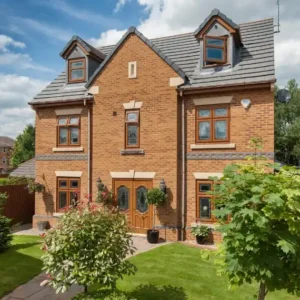
Everything You Need To Know About Installing In Conservation Areas

Conservation areas are designated regions aimed at preserving and protecting the architectural and historical significance of specific neighbourhoods. These areas have stricter regulations and guidelines for planning and development, including the installation of new windows and doors.
If you have customers living in a conservation area and are considering installing new windows or doors, it’s crucial to understand the specific requirements and considerations involved. Luckily, Sternfenster’s comprehensive guide is here to save your day, so you can inform your customers!
Regulations and Considerations
Living in a conservation area offers unique advantages to your customers. These areas are renowned for their distinctive charm, character, and historical importance. By installing windows and doors that adhere to conservation area guidelines, you can enhance your customers’ property aesthetic appeal while preserving its historical integrity. Additionally, energy efficient windows and doors can improve their home’s thermal performance, reducing energy consumption and carbon footprint.
Installing windows and doors in conservation areas requires adherence to specific regulations and considerations. These regulations ensure that any changes made to the property harmonise with the surrounding environment and maintain the character of the conservation area. Key rules and considerations include:
- Planning Permission:
Most changes to windows and doors in conservation areas require planning permission to ensure compliance with local planning authority guidelines.
- Design and Materials:
Windows and doors in conservation areas should be sympathetic to the existing architecture and character of the area. Traditional materials such as timber or uPVC with a woodgrain finish are often preferred.
- Glazing:
Double glazing is usually required for windows in conservation areas to improve energy efficiency. However, to maintain the original appearance, there may be restrictions on the type of glazing used, such as slimline or heritage glazing.
- Window Styles:
Window styles should align with the period and architectural style of the property and the conservation area. Common window styles found in conservation areas include sash windows, casement windows, and bay windows.

Our Range of Products for Conservation Areas
Here at Sternfenster, we offer a wide range of windows and doors suitable for installation in conservation areas. Our products meet the strict regulations and guidelines set by local planning authorities while providing excellent thermal performance and security. Though every local authority is different from the other, so they all have different rules and regulations in terms of planning. While we have various range of products that achieve the heritage look and have previously been approved for conservation areas, it’s best that your customers check with their local authority.
Installing new windows and doors in conservation areas requires careful consideration and adherence to specific regulations. Here at Sternfenster, we have the expertise and range of products to help you navigate the process and find the perfect solution for your customers in conservation areas. Whether they are looking for uPVC, aluminium windows, or composite doors, we have the products and knowledge to meet their needs.
What’s better, by joining our approved network of installers, you can benefit from Sternfenster’s support too. Any questions you may have for installing in conservation areas, you can get in touch with us. But for now, join our network today & start reaping the benefits of being a Sternfenster installer of windows and doors in conservation areas.








